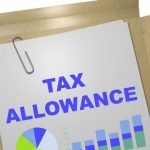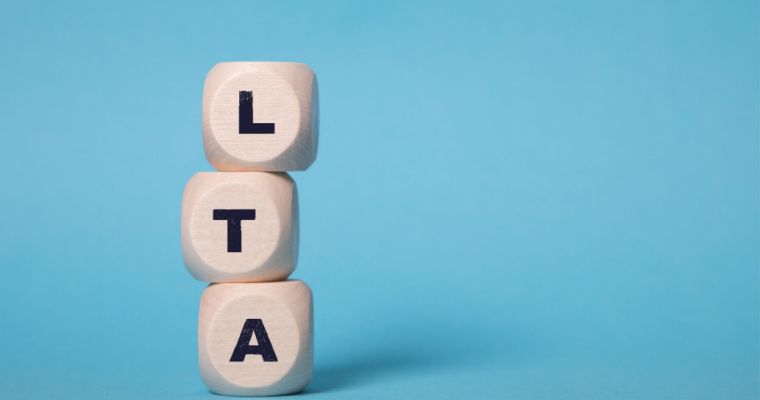What is Dearness Allowance? – Types, Calculation, and Current Rate

What is Dearness Allowance?
Dearness Allowance Meaning – Dearness Allowance (DA) is an allowance paid to Government employees (including public sector unit employees) by their employers to offset the impact of inflation on their salaries. It is a cost of living adjustment that is calculated as a percentage of an employee’s basic salary. The purpose of DA is to help employees maintain their standard of living by adjusting their salaries according to the changes in the cost of living index. The rate of DA is usually revised periodically based on the prevailing inflation rate.
How to Calculate Dearness Allowance?
Dearness Allowance is calculated keeping in mind the All India Consumer Price Index (AICPI), with the base year taken as 2016. It is built on the basic salary given to the employee, and is declared twice a year – once in January and again in July.
There are different formulas given by the Government of India to calculate DA for Central Government employees and for other PSUs and CPSEs. These are as follows:
1. For Central Govt. Employees
DA for Central Government employees is calculated using the following formula:
- DA = ((Past 12 months average of AICPI (with Base Year 2016=100) – 115.76) / 115.76) * 100
2. For Public Sector Employees
For employees of the public sector that includes PSUs, CPSEs and single state-owned companies and enterprises, the DA calculation is done with the following formula:
- DA = ((Past 3 months average of AICPI (with Base Year 2016=100) – 126.33) / 126.33) * 100
Based on these formulas, the calculation is done and the amount is given to the employees as part of their monthly compensation.
Types of Dearness Allowance
There are broadly two types of Dearness Allowance. These are Industrial DA and Variable DA. Let us understand these in detail:
1. Industrial Dearness Allowance
Industrial Dearness Allowance (IDA) is offered to employees working in companies in the public sector. It is adjusted every quarter, based on the CPI, to counter the effects of inflation. The IDA rate is applicable to all employees, including the top management, officers, and members of the staff of public enterprises.
2. Variable Dearness Allowance
The Variable Dearness Allowance (VDA) is applicable only to Central Government employees. This is also based on the consumer price index. However, it is revised every six months.
There are three components of VDA – the CPI, the base index, and the amount of DA that the Government sets. The DA amount set by the Government remains unchanged till there is a revision in the minimum wages.
How is DA Treated Under Income Tax Act?
Under the Income Tax Act, 1961 DA is fully taxable. This implies that you will have to declare the entire amount of DA you have received while filing your tax returns and pay the applicable tax on it. In case you are provided unfurnished, rent-free accommodation, DA is taken as a part of your salary to the extent to which it forms a part of the retirement benefit.
What is the Role of Pay Commission in Calculating Dearness Allowance?
The Government set up the Pay Commission to look into the assessment and revision of the salaries of public sector employees. Every Pay Commission thoroughly assesses the various components of the salary, including DA. They evaluate the impact of inflation and make the DA policy in accordance with it. The Pay Commission also has the authority to modify the multiplication factor that is there in the formula for the calculation of DA.
Over the years, the Pay Commission has played a significant role in reviewing the compensation of public sector employees, ensuring that they are compensated in DA in accordance with the rising level of inflation.
Also Read
Current Dearness Allowance Rate
Dearness Allowance is given on the basis of the cost of living for the employee. Since the costs are different based on where a person is living in India or in Bangladesh, there is no one rate for DA. Thus, employees in urban, rural, and semi-urban areas will have differential DA rates applicable to their salaries.
The current dearness allowance for Central Government employees, as per the latest announcement in March 2023, has been increased to 42%. This is an increase of 4% from the previous DA rate. This will come into effect on a retrospective basis from 1st January 2023. This increase has been based on the formula for the calculation of DA as given by the 7th Pay Commission. It is likely to have an impact on 47.58 lakh employees, as well as about 69.76 lakh pensioners.
Dearness Allowance for Pensioners
Whenever a new salary structure is rolled out by the pay commission, the same changes are made to the pension of the retired employees. Thus, an increase in the DA rates for current employees will lead to a similar increase in DA in pensions. These changes are made to both regular as well as family pensions.
If pensioners are re-employed after retirement, they are not eligible to receive DA if it is given on a time scale or fixed pay basis. If that is not the case, the re-employed pensioners can get the dearness allowance, and it will be limited to the last pay they had drawn.
However, if on re-employment, the pensioner resides in a foreign country, DA is not paid. Regular pensioners who are not re-employed, nonetheless, continue to get DA even if they reside outside India.
Dearness Allowance Merger
As inflation rises, so does the DA. It has been made a rule that once DA crosses the 50% mark, that is, when DA becomes 50% of the basic salary, both DA and basic salary are merged together. This becomes immensely beneficial for the employees, because the other components of the salary are calculated as a percentage of the basic salary. A boost in the basic salary subsequently increases the number of other benefits as well.
Difference Between DA and HRA
Dearness Allowance differs from House Rent Allowance (HRA) on the following basis:
| Basis | Dearness Allowance | House Rent Allowance |
| Definition | DA is given as an adjustment in the cost of living of public sector employees. | HRA is given as compensation to pay the rent of the accommodation where the employee is staying. |
| Calculation | The calculation is done based on the given formulas by the Government, applicable to the basic salary of the employee. | HRA is not calculated on the basis of the basic salary. |
| Eligibility | Only public sector companies and Central Government employees are eligible to receive DA. | HRA is given to both public and private sector employees. |
| Taxation | DA is fully taxable and must be mentioned under the salaries subhead while filing taxes. | The lowest of the following is exempt from tax while calculating HRA under section 10(13A):Actual HRA received.50% of salary (if the employee lives in metro cities – Delhi, Mumbai, Calcutta, Chennai) or 40% of salary for other cities. Actual rent paid minus 10% of the salary. |
| Revision | DA is revised periodically, usually every six months, keeping inflation in mind. | HRA is not revised unless the entire salary structure is changed. |
Final Word
Dearness Allowance is one of the components of the salary of a Public Sector employee, that is provided as a benefit for the employee, taking into consideration the effects of inflation. It allows the employees to receive an adjusted salary that helps manage their rising cost of living. It is only granted to public sector employees, including those employed by the Central Government. The DA rate is periodically revised by the Government to account for the changes in CPI and the corresponding change in living standards.
Last-minute tax-saving on your mind? Invest in passive Navi ELSS Tax Saver Nifty 50 Index Fund with Navi Mutual Fund and save taxes up to Rs.46,800.
FAQs
The current DA for Central Government employees is 42% of the basic salary. The announcement was made in March 2023, increasing the DA rate by 4% from the previous rate.
All public sector employees are eligible for receiving DA. Private sector employees do not get DA as a part of their compensation.
DA for the Central Government employees is calculated using the formula:
-DA = ((Past 12 months average of AICPI (with Base Year 2001=100) – 115.76) / 115.76) * 100
DA for the other public sector employees is calculated using the formula:
-DA = ((Past 3 months average of AICPI (with Base Year 2001=100) – 126.33) / 126.33) * 100
Yes, DA is offered as a part of the total salary given to public sector employees. It is given as a cost of living adjustment and is calculated as a percentage of the basic salary.
Yes, DA is fully taxable under the Income Tax Act. Thus, you must declare the entire DA amount under the salary head while filing your return and pay the applicable tax on it as per your tax slab.

Customer’s Feedback
No comments found.What is Form 26QB for TDS? How to Download and Submit it?
While purchasing a property, buyers are liable to pay various taxes. The Finance Act, 2013 made TDS... Read More »PF Withdrawal Rules 2023 – Rules, Documents Required and Types
EPF/PF Withdrawal Employees’ Provident Fund (abbreviated as EPF) is a popular retirement sav... Read More »Stamp Duty and Property Registration Charges in Delhi 2023
It is compulsory for property buyers in the Capital to pay stamp duty in Delhi during property regi... Read More »Income Tax Return – Documents, Forms and How to File ITR Online AY 2023-24
In India, it is mandatory for all taxpayers who earn more than the basic tax exemption limit to fil... Read More »What is Section 80CCD – Deductions for National Pension Scheme and Atal Pension Yojana
The Income Tax Act provides a number of deductions and tax benefits to taxpayers, so they can strat... Read More »Tax on Dividend Income: Sources, Tax Rate and TDS on dividend income
What are Dividends? Companies may raise funds for running their operations by selling equity. Th... Read More »Section 112A of Income Tax Act: Taxation on Long-Term Capital Gains
What is Section 112A? Section 112A of the Income Tax Act was announced in Budget 2018 to replace... Read More »Section 206AB of Income Tax Act: Eligibility And TDS Rate
Section 206AB was introduced in the Finance Bill 2021 as a new provision pertaining to higher deduc... Read More »What is a Credit Note in GST – Example, Format and Steps
A GST Credit Note is mandatory for any GST-registered supplier of goods or services. As a supplier,... Read More »Exemptions and Deductions Under Section 10 of Income Tax Act
What Is Section 10 of the Income Tax Act? Section 10 of the Income Tax Act, 1961 provides tax-sa... Read More »Section 57 of the Income-tax Act – Income from Other Sources
It is quite likely that many entities - individuals as well as businesses - have multiple sources o... Read More »How to Claim Leave Travel Allowance? – Benefits, Documents Required and Exemptions
What is Leave Travel Allowance? Leave Travel Allowance or LTA, also known as Leave Travel Conces... Read More »Top 10 Chit Fund Schemes in India in 2023
Chit funds are one of the most popular return-generating saving schemes in India. It is a financial... Read More »10 Best Gold ETFs in India to Invest in April 2023
Gold ETFs or Gold Exchange Traded Funds are passively managed funds that track the price of physica... Read More »10 Best Demat Accounts in India for Beginners in 2023
Creation of Demat accounts revolutionised the way trades were conducted at the stock exchanges. It... Read More »20 Best Index Funds to Invest in India in April 2023
What is an Index Fund? An index fund is a type of mutual fund or exchange-traded fund (ETF) that... Read More »Best Arbitrage Mutual Funds to Invest in India in April 2023
Arbitrage funds are hybrid mutual fund schemes that aim to make low-risk profits by buying and sell... Read More »10 Best SIP Plans in India to Invest in April 2023
What is SIP? SIP or Systematic Investment Plan is a method of investing a fixed amount in ... Read More »10 Best Corporate Bond Funds in India to Invest in April 2023
Corporate bond funds are debt funds that invest at least 80% of the investment corpus in companies ... Read More »10 Best Bank for Savings Account in India [Highest Interest Rate 2023]
Savings account is a type of financial instrument offered by several banks. It lets you safely depo... Read More »






















